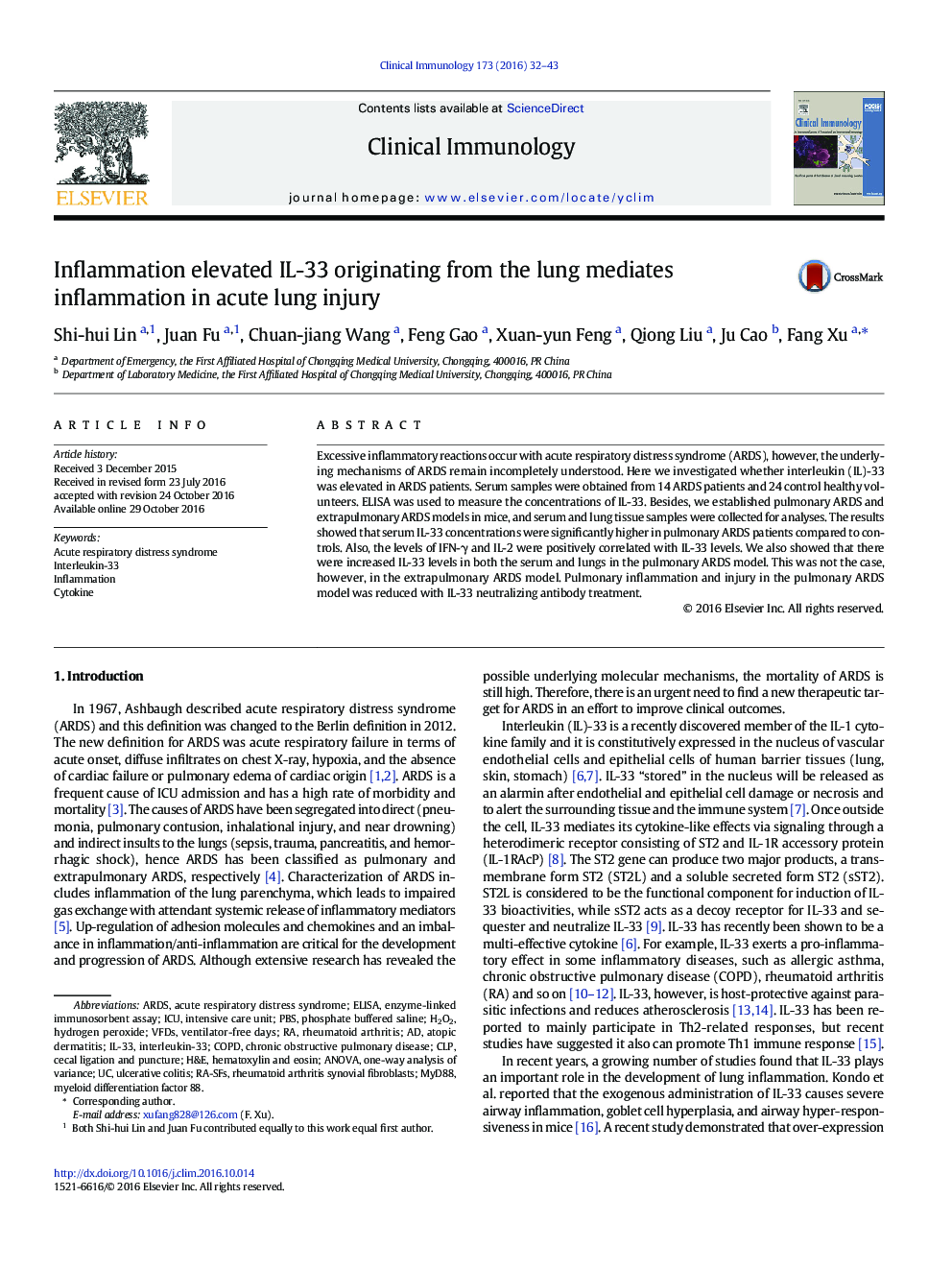| Article ID | Journal | Published Year | Pages | File Type |
|---|---|---|---|---|
| 5654962 | Clinical Immunology | 2016 | 12 Pages |
Abstract
Excessive inflammatory reactions occur with acute respiratory distress syndrome (ARDS), however, the underlying mechanisms of ARDS remain incompletely understood. Here we investigated whether interleukin (IL)-33 was elevated in ARDS patients. Serum samples were obtained from 14 ARDS patients and 24 control healthy volunteers. ELISA was used to measure the concentrations of IL-33. Besides, we established pulmonary ARDS and extrapulmonary ARDS models in mice, and serum and lung tissue samples were collected for analyses. The results showed that serum IL-33 concentrations were significantly higher in pulmonary ARDS patients compared to controls. Also, the levels of IFN-γ and IL-2 were positively correlated with IL-33 levels. We also showed that there were increased IL-33 levels in both the serum and lungs in the pulmonary ARDS model. This was not the case, however, in the extrapulmonary ARDS model. Pulmonary inflammation and injury in the pulmonary ARDS model was reduced with IL-33 neutralizing antibody treatment.
Keywords
CLPRheumatoid arthritis synovial fibroblastsPBSARDSMYD88IL-33H&EHydrogen peroxideRheumatoid arthritisinflammationCecal ligation and punctureInterleukin-33ICUintensive care unitCOPDChronic obstructive pulmonary diseaseANOVAone-way analysis of varianceELISAEnzyme-linked immunosorbent assayAtopic dermatitisAcute respiratory distress syndromeCytokinemyeloid differentiation factor 88Phosphate buffered salineHematoxylin and EosinH2O2Ulcerative colitis
Related Topics
Life Sciences
Immunology and Microbiology
Immunology
Authors
Shi-hui Lin, Juan Fu, Chuan-jiang Wang, Feng Gao, Xuan-yun Feng, Qiong Liu, Ju Cao, Fang Xu,
